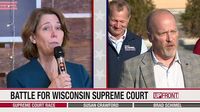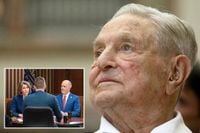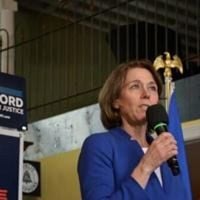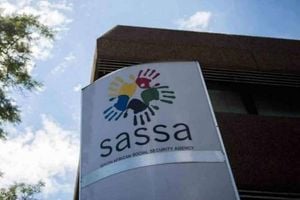As the Wisconsin Supreme Court election approaches on April 1, 2025, all eyes are on the candidates vying for a pivotal seat that could shift the balance of power on the court. Currently, liberals hold a narrow 4-3 majority, but the stakes are incredibly high, not just for Wisconsin, but for the entire nation.
Voters will choose between conservative judge Brad Schimel and liberal judge Susan Crawford in an election that has already broken records for campaign spending. With a staggering $76 million already spent and predictions suggesting total expenditures could exceed $100 million, this race is officially the most expensive judicial election in U.S. history.
Republicans currently enjoy an 18-15 majority in the Wisconsin State Senate and a 54-45 majority in the State Assembly. However, a liberal Supreme Court could thwart any Republican legislative initiatives, particularly those related to abortion and labor rights. If liberals retain control, the court may also revisit public sector union reforms enacted under former Governor Scott Walker, a move that labor unions have long sought.
The implications of this election extend far beyond state lines. Early financial backers of Crawford, including billionaire philanthropist George Soros, recognize the potential for this court to influence national politics. Soros donated $1 million directly to Crawford’s campaign, reflecting a broader strategy to regain control of the U.S. House and halt former President Donald Trump’s legislative agenda.
Indeed, the Wisconsin Supreme Court will be pivotal in ruling on challenges to congressional districts, where Republicans currently hold six of the eight seats. A favorable ruling for Democrats could net them two additional seats, significantly impacting the balance of power in Congress. Crawford’s supporters have even framed the election as a chance to “put two more House seats in play for 2026.”
On the other side of the aisle, Schimel has garnered significant financial support from notable conservative figures, including Elon Musk, who has contributed over $19 million to Schimel’s campaign and associated groups. Musk’s involvement has sparked controversy, with Crawford criticizing the unprecedented level of financial influence from the world’s richest man in a state Supreme Court race.
While Crawford’s campaign has raised a record-breaking $24 million, Schimel’s supporters, including the Republican State Leadership Committee and other conservative PACs, have mobilized substantial resources to counteract this momentum. The race has become a battleground for competing interests, with right-wing billionaires pouring money into attack ads against Crawford.
Schimel, who previously served as Wisconsin’s Attorney General, emphasized the importance of turnout among Trump supporters in the final days of campaigning. “It’s a turnout race,” Schimel stated, highlighting his strategy to mobilize conservative voters. He believes that if he can secure 60% of the Trump electorate on Election Day, he will likely win.
Conversely, Crawford has focused on rallying Democratic voters, emphasizing the need for a strong turnout to protect progressive values. Recently endorsed by former President Barack Obama, she has been actively campaigning across the state, encouraging early voting and emphasizing the significance of the election.
As both candidates make their closing arguments, the tone of the race has become increasingly contentious. Schimel has criticized the influence of “activist judges,” while Crawford has pointed to the unprecedented financial backing from Musk as a concerning trend in judicial elections.
The Wisconsin Supreme Court election is not just about local issues; it is a microcosm of the broader national struggle over judicial power and the direction of American democracy. With both sides recognizing the high stakes, the outcome could have lasting implications for issues ranging from abortion rights to labor laws and gerrymandering.
As Election Day approaches, election officials are preparing for a high turnout, with Wisconsin’s top elections chief stating that they are focused on ensuring a smooth voting process. However, concerns remain about potential legal challenges and the impact of outside money on the electoral process.
In the lead-up to the election, it is clear that this contest is about more than just a single seat on the Wisconsin Supreme Court. It represents a critical juncture in the ongoing battle for the soul of American democracy, with both parties mobilizing their resources to secure a victory. As voters head to the polls, they will be deciding not only the future of Wisconsin but also the broader trajectory of national politics.
With the election just days away, the question remains: who will emerge victorious in this high-stakes showdown? The answer could reshape the political landscape in Wisconsin and beyond for years to come.







